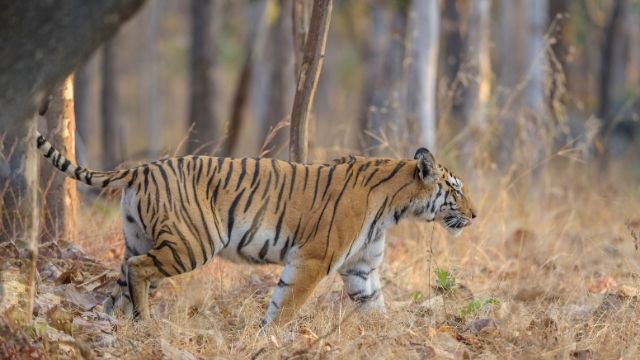The park's subtropical climate is reflective of Madhya Pradesh as a whole, of which it is a unique part. From March through June, temperatures average between 21 and 42 degrees Celsius, making the summer season feel even hotter.
One reason that this national park is shut down from July to September is because the rainy season begins and the warm weather begins to recede. The next season, winter, is perfect for a trip to Pench National Park.

The vegetation begins to lose its original hue beginning in March. However, during the months of March–May, tiger sightings are extraordinarily likely.
This is because the grass dried up and less water is available when temperatures rise to dangerous levels. This means they are more likely to congregate near the few surviving water sources.
However, with temperatures reaching 42 degrees Celsius at this time a safari would be a miserable experience. If you're going to Pench in the summer, you should pack light colors and fabrics like cotton and linen.
June isn’t a peak travel month because, even if temperatures start to drop, they can still rise rather high. The beginning of the season of precipitation also makes going on a safari during this time difficult.
It rains very heavily in Pench, but not too often. When it rains, the landscape instantly looks fresher and greener. The area's natural splendor is at its pinnacle.
However, even mild showers can quickly intensify into dangerous downpours. As a result, the park's Madhya Pradesh-based section is off-limits from July through September due to the monsoon. In October, following the rainy season, the sanctuary regains its beautiful green color and welcomes tourists once more.
The weather is mild, with temperatures between 11 and 31 degrees Celsius. The greatest time to visit is during the winter.
When it comes to visiting Pench National Park, there's no contest between the summer and winter months. During the winter, the park is quiet and pleasant for tourists of all stripes. This time of year often sees lows of 5 degrees Celsius. That's why it makes sense to plan for a trip to this National Park in winter.
The sparseness of the flora allows for easier wildlife observation. Pench is home to over 200 avian species, each one more stunning than the last.